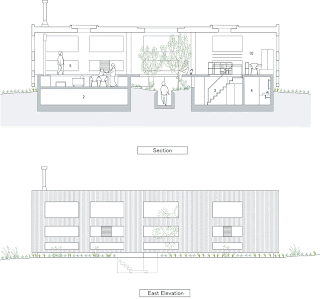welcome to mies and peas!
your nonstop source of everything science of architecture, including information for the ARE, LEED, and PE exams.
Sunday, September 11, 2011
MIES - Nest
What if you brought the world into your home with you? This small home, located at the foot of a mountain near Onomichi City, Japan, was built by UID architects for a family of four. In the family, there were three females (one mother and two daughters) and an early concept of the house included a sense of nesting, which echoed their sentiments as to the home they would like to live in. The eventual design expanded this idea a little, transforming the nest into a forest within. A from that, standard Japanese philosophies of transcendence, from forest to earth to universe, overrode, giving this final home a sense of scale.
The entrance to the home is one the ground floor. Visitors pass through a planted garden (shown above) the grows up to the full height of the house. This is in standard line with Japanese mythology, where trees such as peach blossoms represent powerful universal ideals.
The whole building feels like a single space. As a structure, it comprehends surroundings and environment by rethinking elements such as floors and walls. In the ground layer, some spaces are connected to each other by a tunnel that becomes concrete, which gives a sense of foundation.
Above the ground, a floating wooden nest box composed of branches and fallen leaves cover the nest on the ground surface. Although the composition floors, voids and walls make the architectural elements seem separated, they instead become vital links of architecture to the outer context, and help one from inside view the world beyond.
And from the plans and elevations, we see this continue. The apertures are placed evenly near the living quarters of the home and increase in height (rather than decrease) as the elevation rises. This stays true to the sense of universal scale, and falls away from conventional architectural thinking. It is emblematic of the best in natural Japanese philosophy and as such, somewhat transcends its own architecture entirely.
Labels:
client relations,
concrete,
foundations,
Japan,
mythology,
nesting,
Onomichi City,
scale,
UID architects,
wood
Subscribe to:
Post Comments (Atom)








No comments:
Post a Comment